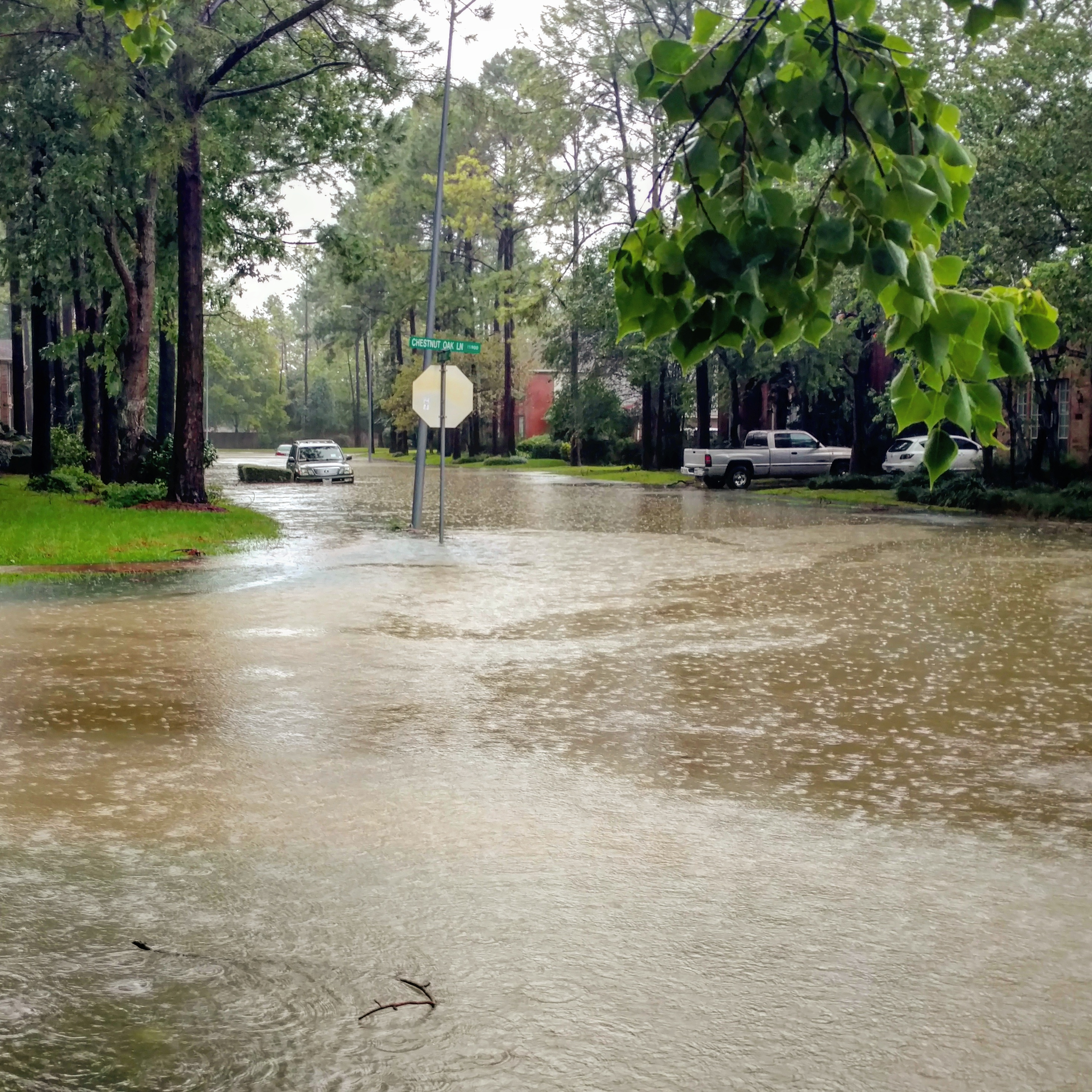Streets have become rivers in Huston since Hurricane Harvey made landfall in Texas on Friday. Overhead images of bodies of water dotted with roofs and slivers of tops of abandoned cars, and Houstonians wading these lagoons dragging their belongings on floaters, are right out of Armageddon. Why wasn’t the city able to absorb more of Harvey’s rainfall?
As with most catastrophes, the cause is both Mother Nature and human activity/lack of preparedness.
What We May Ascribe To Natural Causes.
Houston is just 40 miles from the Gulf Coast. This proximity makes it susceptible to storms that linger in the area from late spring through early fall, The Weather Channel explained.
The city is very flat and sits only about 50 feet above sea level, which makes it prone to flooding. Its metro area is located beside many waterways, sprawling out in every direction.
According to Climate Central, since the 1950s, the region has seen a 167 percent increase in heavy downpours. (One could argue that this is the result of climate warming, but no direct link can be offered at this time, so let’s leave this one in the “natural causes” category for now.)
What We Should Take the Blame For
In a phone interview with Huff Post, climatologist, and professor of atmospheric sciences at Texas A&M University suggested that urban development policies played a role in the massive scope of the flooding: “Houston has basically just grown outwards…As Houston grows out, you’re paving over more and more space and you’re collecting rain over a larger area that’s just hitting cement. It’s got to go somewhere, so it gets concentrated where the elevation is low.”
This was put forward by experts after the 2015 floods devastated the city. “When we put concrete down, when we build drainage channels, we concentrate that water and dump it off the land where it used to be stored, we push it downstream on ourselves. That’s been the story of Houston development,” said Rice University civil engineering professor Jim Blackburn in a Click2Huston interview.
The last major storm to hit Houston, 2008′s Hurricane Ike, should have been a wake-up call to the city’s urban planners and policy makers.
And yes, climate warming does join the other culprits of the disaster wreaked by Harvey on Huston and other Gulf areas of Texas. According to Daniel Cohan, a professor of environmental engineering at Rice University in Houston, Harvey appeared to gather strength over, particularly warm waters, further intensifying the hurricane.


